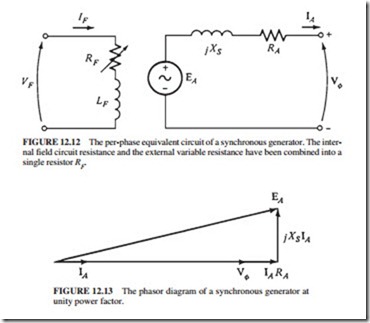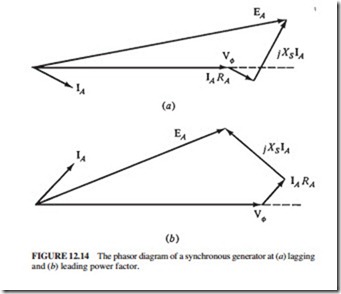 THE PHASOR DIAGRAM OF A SYNCHRONOUS GENERATOR
THE PHASOR DIAGRAM OF A SYNCHRONOUS GENERATOR
Phasors are used to describe the relationships between ac voltages. Figure 12.13 illustrates these relationships when the generator is supplying a purely resistive load (at unity power factor). The total voltage EA differs from the terminal voltage Vcp by the resistive and inductive voltage drops. All voltages and currents are referenced to Vcp, which is assumed arbitrarily to be at angle 0°.
Figure 12.14 illustrates the phasor diagrams of generators operating at lagging and leading power factors. Notice that for a given phase voltage and armature current, lagging loads require larger internal generated voltage EA than leading loads. Therefore, a larger field current is required for lagging loads to get the same terminal voltage, because
where w must remain constant to maintain constant frequency. Thus, for a given field current and magnitude of load current, the terminal voltage for lagging loads is lower than the one for leading loads.
In real synchronous generators, the winding resistance is much smaller than the synchro- nous reactance. Therefore, RA is often neglected in qualitative studies of voltage variations.

